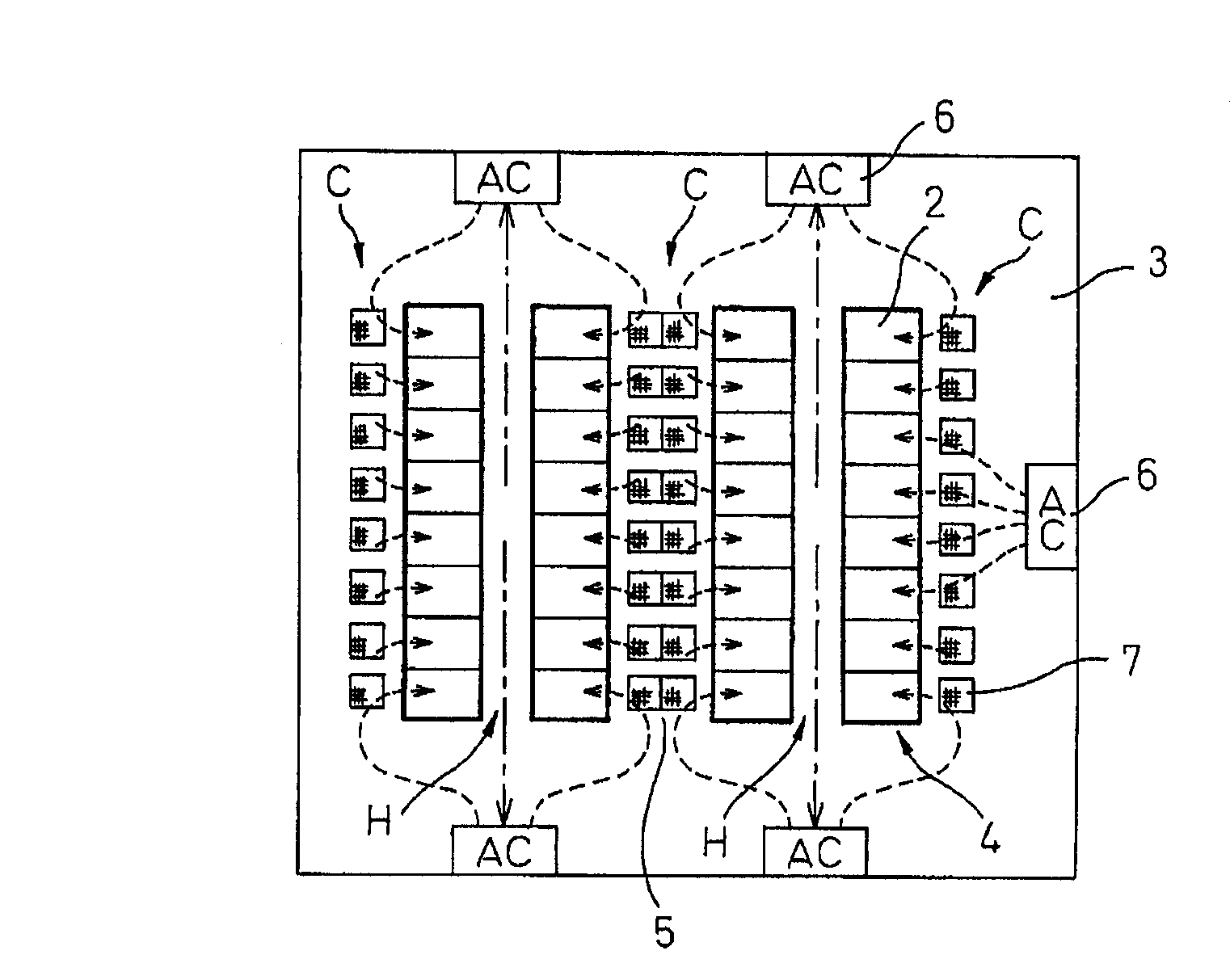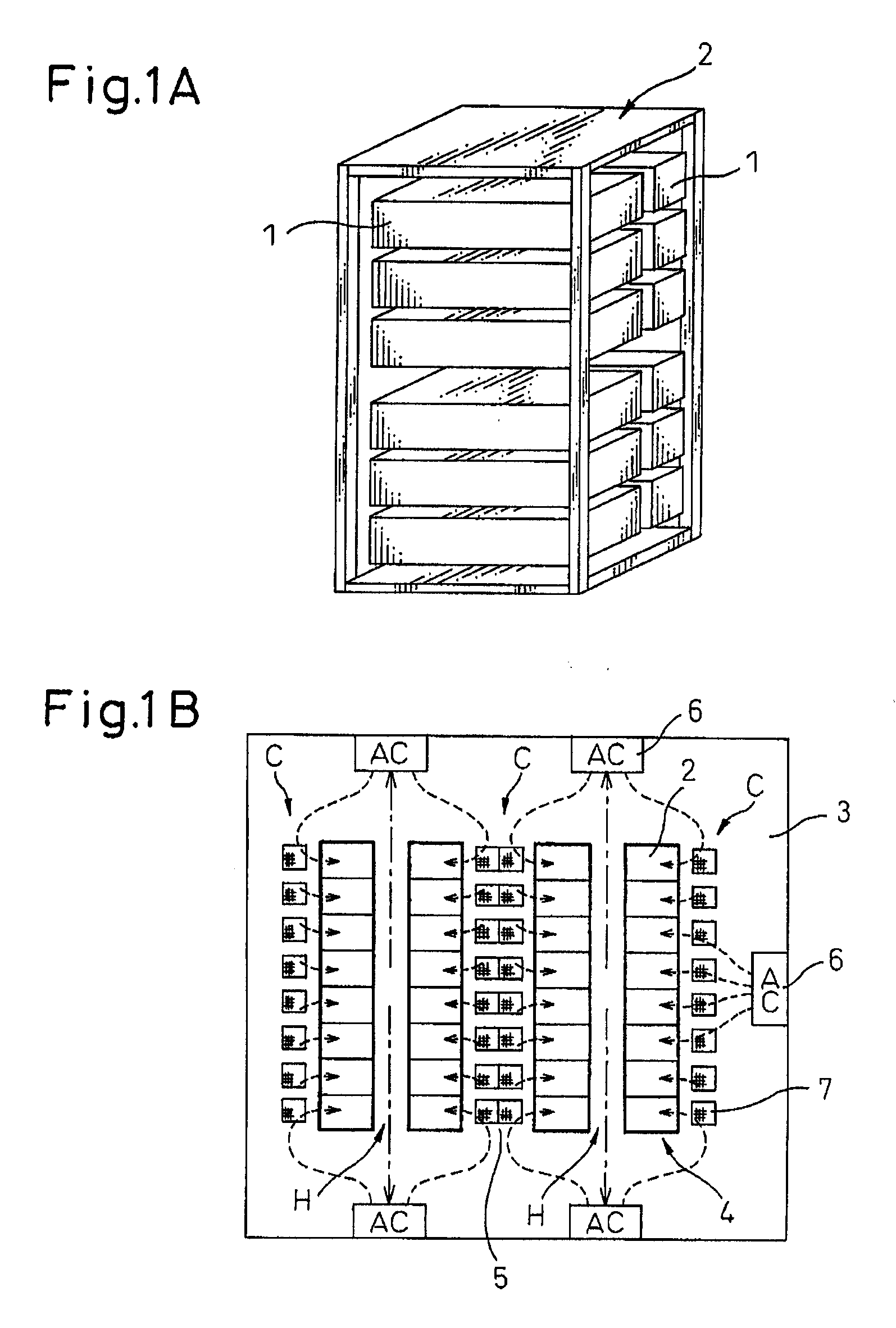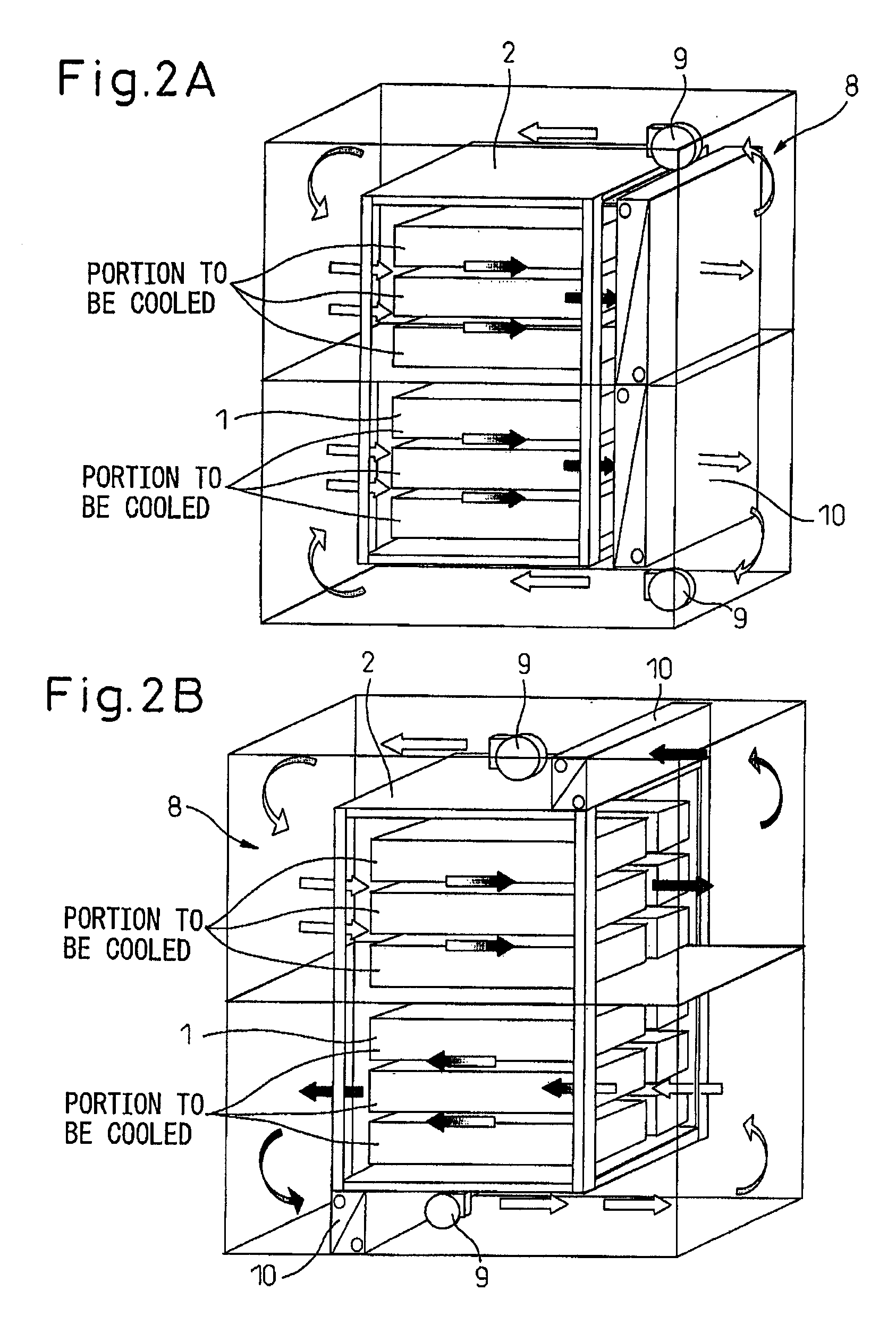Cooling system for information device
a technology for information devices and cooling systems, which is applied in the direction of electrical apparatus casings/cabinets/drawers, semiconductor/solid-state device details, instruments, etc., can solve the problems of large amount of electric power and large amount of heat, and the temperature of the servers cannot be lowered, so as to reduce the number of fan units and reduce the power supply to the fan
- Summary
- Abstract
- Description
- Claims
- Application Information
AI Technical Summary
Benefits of technology
Problems solved by technology
Method used
Image
Examples
Embodiment Construction
[0066]Before describing the preferred embodiments, an explanation will be given of a conventional cooling system for information devices shown in FIGS. 1A to 2B.
[0067]FIG. 1A shows a rack with cases stacked in two rows, in which blade type servers are housed in each case. The blade type server rack has a height of about 2 meters. In a data center or the like, a number of such racks are arrayed in positions in an air-conditioned room 3 dedicated to blade type servers, as shown in FIG. 1B. The air-conditioned room 3 needs to be cooled to prevent the temperature from rising because almost all of electric power supplied to the racks generates heat.
[0068]In the air-conditioned room 3, rack rows 4 each composed of racks 2 arrayed in a lateral direction are prepared. Further, the rack rows 4 are arrayed in rows in parallel, and warm air passages H and cooling aisles C are formed alternately between the rack rows 4. Conventional cooling of racks 2 in such air-conditioned room 3 is as follow...
PUM
 Login to View More
Login to View More Abstract
Description
Claims
Application Information
 Login to View More
Login to View More - R&D
- Intellectual Property
- Life Sciences
- Materials
- Tech Scout
- Unparalleled Data Quality
- Higher Quality Content
- 60% Fewer Hallucinations
Browse by: Latest US Patents, China's latest patents, Technical Efficacy Thesaurus, Application Domain, Technology Topic, Popular Technical Reports.
© 2025 PatSnap. All rights reserved.Legal|Privacy policy|Modern Slavery Act Transparency Statement|Sitemap|About US| Contact US: help@patsnap.com



